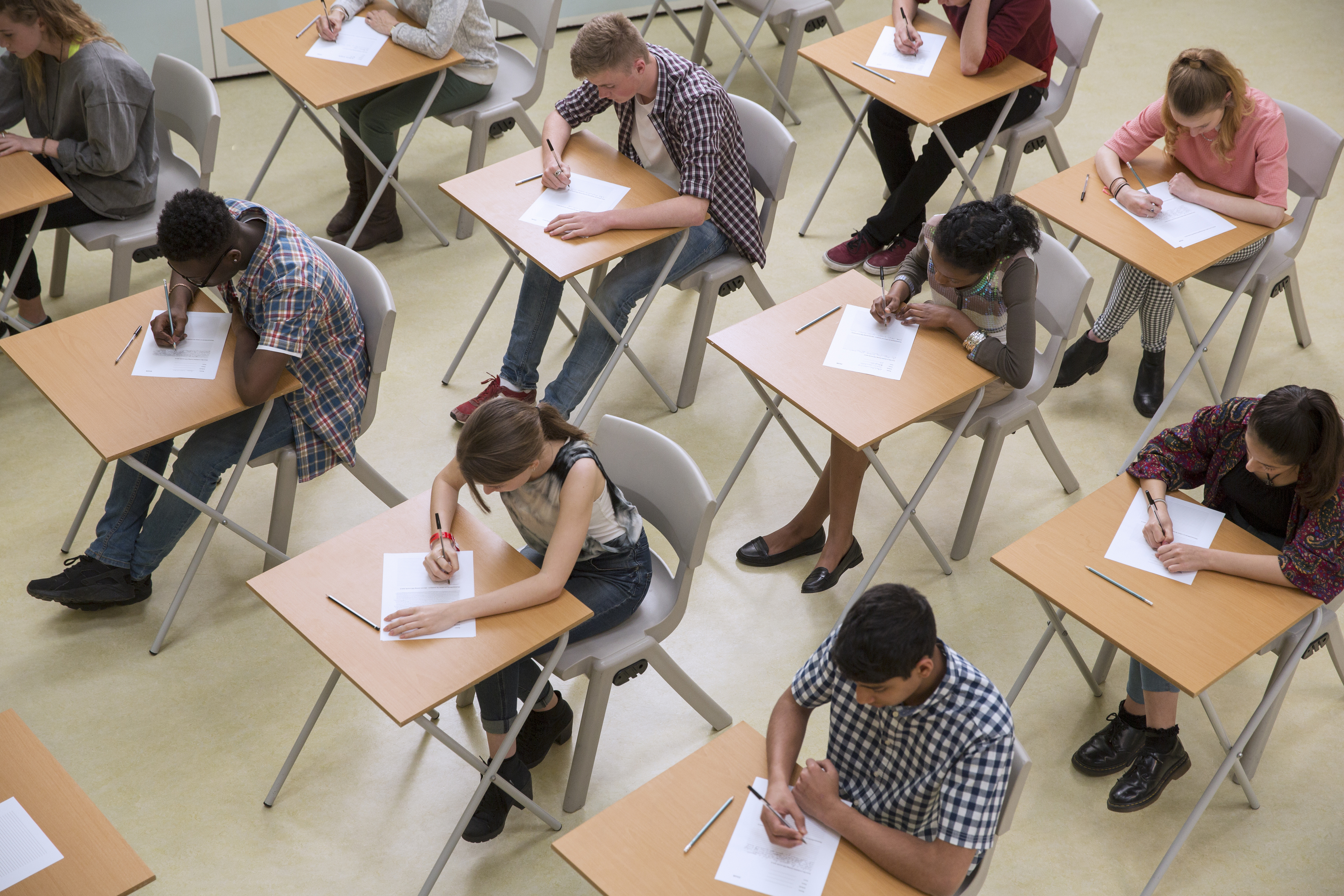It’s safe to say that no one really loves standardized testing. So why do we do it every year?

Standardized testing pros and cons continue to be hotly debated.
In this article, we’ll break down what proponents say are the pros of standardized testing. We’ll also break down the objections of its many detractors.
Standardized Testing Pros and Cons
Federal regulations such as the No Child Left Behind Act of 2001 have made high-stakes tests a way of life in public schools nationwide.
Policymakers sought a way to measure student progress using test data accurately.
However, the reception of standardized testing has been mixed. Some educators and parents see it as an opportunity to assess student learning fairly and objectively. Others feel it emphasizes “teaching to the test” without doing much for learners.
Here are some arguments against standardized testing as part of American education.
What are some cons of standardized testing?
Con #1: Test scores do not accurately measure students’ abilities.
A plethora of variables can impact test takers. Test results are more likely to reflect how a student feels on a particular day rather than provide any valuable learning metric. In many ways, the results simply show which students excel at test preparation. In addition, test takers bring with them several stereotypes and biases which can predispose them to perform poorly.
Con #2: Students from wealthy families perform better on standardized tests.
Some studies have found that the biggest predictor of success on standardized tests is not a student’s ability but their socioeconomic status.
This is especially true of the SAT, which high school students take as part of the college admissions process. Why is that?
One possible explanation is that wealthy families are able to spend extra money on tutoring and test preparation. This suggests that test results are not earned but bought.
Another potential discrepancy lies in the language of some of the test questions. They often contain references that only white students from upper-middle-class backgrounds would be able to understand.
Con #3: Testing can inhibit effective teaching.
When public schools rely on test data to inform decision-making, this puts pressure on educators to focus on teaching to the test. In some cases, teachers find that their evaluations and their long-term job security are directly influenced by student test results. This may hold them back from teaching other content and skills, such as creative problem-solving and critical thinking. Additionally, many teachers feel that standardized testing offers constant disruption to their teaching schedule and curriculum.
Con #4: Testing makes students feel less confident.
Low scores on a high-stakes test can cause students to question themselves, asking if they really know what they thought they knew.
Rather than seeing their score as just one metric among many, students often interpret it as the definitive evaluation of their ability.
In reality, test scores should be seen as just one small part of a larger picture of student learning and student achievement.
In some cases, a student may have a great depth of skill and knowledge in a particular subject area but simply isn’t good at taking multiple-choice tests.
Con #5: Student performance on standardized tests is not a good predictor of student success in the future.
There are many, many real-life skills and abilities which a standardized test cannot measure, such as problem-solving, creativity and critical thinking.
Furthermore, standardized tests only measure student performance in math, reading and science. They do not measure student learning in any other area.
Even within these narrow subject areas, the tests simply measure a student’s ability to respond to multiple-choice questions.
"There are many pros & cons of standardized testing. At the end of the day, it’s just one measure among many to gauge student learning."
What are the advantages of standardized tests?
On the other side of the argument, proponents of standardized testing have identified many ways it can benefit the American education system.
Pro #1: It’s an objective metric to measure student learning and identify areas needing improvement.
Standardized testing is inherently fairer and more objective than other metrics because students in the same grade level, in public schools and private schools, all take a single test on which their performance is evaluated the same way.
It is the only metric which has not been determined by a student’s school or town.
Another valuable aspect of standardized testing is that it removes any biases resulting from different educators’ grading policies or individual preferences for particular students. For example, what one teacher might grade as an A could look more like B or C work to another. Standardized testing removes these differences, so everyone is on a level playing field.
Pro #2: It can show progress over time.
Standardized tests provide objective measures for comparing one school district’s progress to another. However, they also provide a window into the progress of individual students over time.
As students take standardized tests at different points throughout their school careers, educators can see where they are improving and where interventions may be needed. It’s also helpful to identify trends among certain groups of students within a school district.
Pro #3: It levels the playing field for marginalized groups.
It’s a sad fact that some school districts are wealthier than others and simply have more to offer students. This can create a discrepancy in student learning in one district as opposed to another. Standardized testing can identify this discrepancy, indicating when a group of students in a particular district need more than what they are getting. The truth is that every student has the right to a quality education, no matter what part of the country they live in.
Pro #4: It sets a universal standard.
How do you measure good education? It could mean different things in different school districts, which could be a problem, especially for students moving from one district to another. By measuring student performance and ability in a consistent way, we create a standard for a good education which holds true across the board, eliminating inconsistency and confusion. It also allows for a meaningful comparison between students from different regions and/or backgrounds so that they can be ranked in an appropriate way.
Pro #5: It holds educators and stakeholders accountable.
Standardized test results yield objective data across school districts regarding teacher effectiveness. While it would be a mistake to depend solely on this data for teacher evaluations, it still provides useful information that districts can combine with other data points to gauge teacher effectiveness. More information means a fuller picture of how educators are doing.
Test results can also signal to school boards and superintendents when they may need to address problems with student learning in their district. An objective look at student performance clues in local governments when it might be time to intervene.
Related Resource: Test Prep Strategies, Tools, and Practice Questions
The Takeaway
There are many pros & cons of standardized testing. At the end of the day, it’s just one measure among many to gauge student learning. At the same time, we must acknowledge its limitations and not rely on standardized test results as our only source of information.
Interested in learning more about standardized testing and other hot-button issues of American education? Sign up for the TeacherVision newsletter to get updates delivered to your inbox.
And don’t forget to sign up for a free TeacherVision account to access tons of helpful teaching resources.











